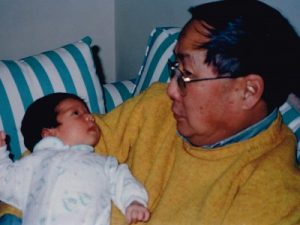 HBF is pleased to connect our blog readers to Christine Kukka’s monthly HBV Journal Review that she writes for the HBV Advocate. The journal presents the
latest in hepatitis B research, treatment, and prevention from recent academic and medical journals. This month, the following topics are explored:
HBF is pleased to connect our blog readers to Christine Kukka’s monthly HBV Journal Review that she writes for the HBV Advocate. The journal presents the
latest in hepatitis B research, treatment, and prevention from recent academic and medical journals. This month, the following topics are explored:
- New Study Finds HBV Genotype E Responds Poorly to Entecavir
- HBV Genotypes Help Tell the Human Story of Slavery in the Americas
- Researchers Find Tenofovir Increases Hip Bone Loss in Older Patients
- Decline in HBV RNA Indicates Who Loses HBeAg During Antiviral Treatment
- Shortened Vaccination Schedule May Get More Drug Users Immunized
- Primary Care Doctors Rarely Screen Patients for Cirrhosis
- Tenofovir or Telbivudine Recommended for Pregnant Women with High Viral Loads
- Access to Healthy Food Vital for HBV Patients, but Many Live in Food “Deserts”
- Scientists Create Viable Liver Cells in a Lab for HBV Research
- Nerve Damage Prompts Warning Against Telbivudine-Interferon Combo Treatment
HBV Journal Review
September 1, 2014
Volume 11, Issue 9
by Christine M. Kukka
New Study Finds HBV Genotype E Responds Poorly to Entecavir
Experts know some hepatitis B virus (HBV) strains called genotypes respond better to interferon treatment than others, but now scientists are discovering that genotypes respond differently to antiviral treatment too.
HBV genotypes are found in different regions of the world and each evolved over centuries to have slightly different molecular make-ups with unique traits. Some carry a higher risk of liver damage and cancer, while other genotypes are less virulent.
In a recent study, Italian researchers compared how well patients with genotypes A, D and E fared after three years of treatment with the antiviral entecavir (Baraclude). All of the patients tested negative for the hepatitis B “e” antigen (HBeAg-negative). The scientists measured hepatitis B surface antigen (HBsAg) levels and HBV DNA (viral load) every three months during the first year of treatment and then every six months over the study period.
They found the rates of HBsAg declines resulting from antiviral treatment varied markedly between genotypes. They extrapolated how many years of entecavir treatment each genotype required before a patient would clear HBsAg and achieve undetectable viral load.
HBV genotype A: It would take on average 15.6 years of entecavir treatment for an HBeAg-negative patient with HBV genotype A to lose HBsAg. This genotype is found in northern Europe, North America, India and southern Africa.
HBV genotype D: It would take 17 years for genotype D patients to lose HBsAg. This strain is found primarily in Russia, the Middle East, the Mediterranean region, and India.
HBV genotype E: This genotype, found in Central Africa, responded the most poorly to entecavir. Scientists estimated it would take 24.6 years for these patients to lose HBsAg, according to the report published in the August issue of the Journal of Medical Virology.
Source: www.ncbi.nlm.nih.gov/pubmed/25131947
HBV Genotypes Help Tell the Human Story of Slavery in the Americas
Because HBV genotypes develop in specific regions around the world, their distribution around the world today can help tell the story of mass human migrations, including the enslavement and forced migration of millions of Africans to Brazil since the 1500s.
Read the HBV Journal Review in its entirety here.









